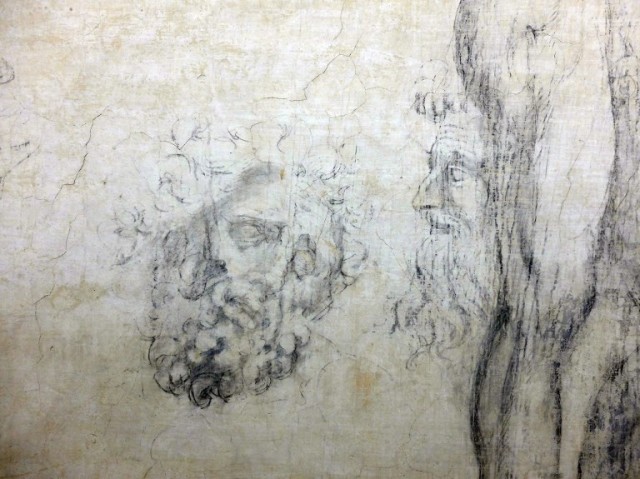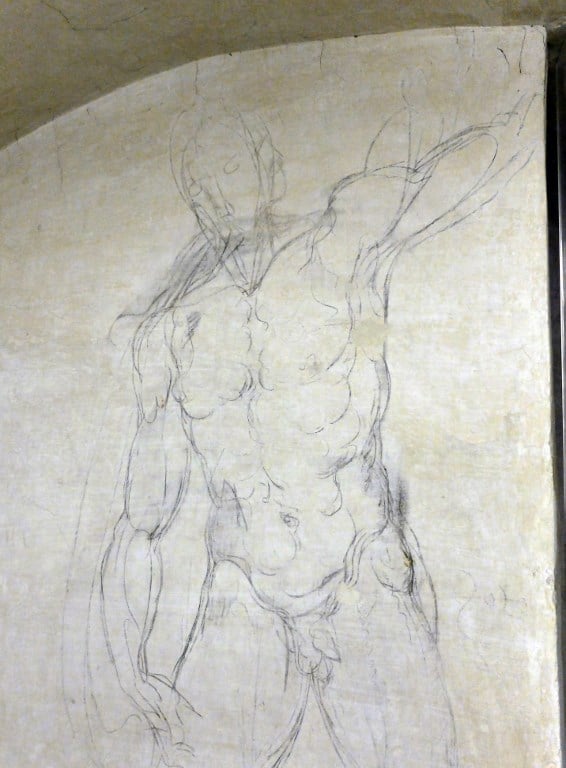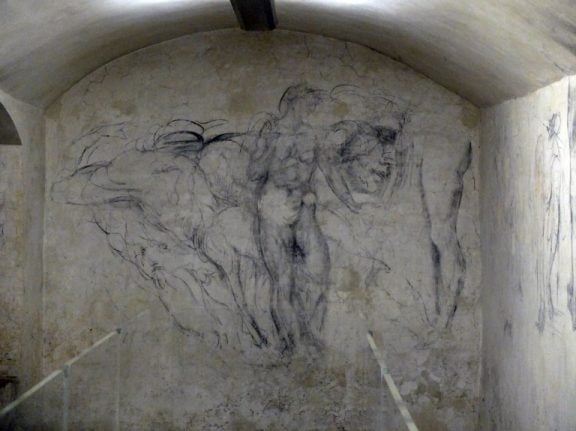Until some 40 years ago, no one realized that it existed. And when curators discovered a secret room beneath the Medici Chapels in the Basilico di San Lorenzo in Florence, its walls covered in what appeared to be unknown sketches by the Renaissance master Michelangelo, they ordered it sealed to the public for conservation.
But the secret Michelangelo room could soon be permanently opened to visitors for the first time in history.
Until now, only a few art experts – and the occasional lucky guest – have been permitted to enter the narrow cell, where historians believe that Michelangelo hid out in 1530 after he betrayed his patrons, the Medicis, by joining a revolt against their rule of Florence.
He resurfaced around two months later, when he was permitted to resume work on the Medici family’s monuments in the same chapel beneath which he had been hiding.
The artist, then 55, is thought to have spent the time doodling. The chamber’s walls are covered with sketches in charcoal and chalk, several of which resemble figures from Michelangelo’s other known works.

Photo: Claudio Giovannini/AFP.
Scholars disagree on whether, which and how many of the drawings are by Michelangelo. Some don’t seem good enough to have come from the master’s hand, while others echo such masterpieces as the statue of David, a drawing of Leda and the Swan, or parts of the Sistine Chapel.
The sketches were rediscovered in November 1975, when the director of the Medici Chapels museum at the time, Paolo Dal Poggetto, was trying to find a new route for visitors to exit. He found a trapdoor hidden beneath a wardrobe in the Medicis’ tomb room, which led down to a rectangular room that at the time was used to store coal.
Dal Poggetto had the chamber cleared, the walls – by then covered in coal dust, mould and mud – cleaned and the plaster removed fraction by fraction with scalpels. Gradually not only drawings but calculations, words and graffiti began to emerge.
Considered too fragile to open to visitors, the room remained sealed. In 2014, to mark the 450th anniversary of Michelangelo’s death, the museum created a virtual tour of the hidden chamber so that the public could at least admire it on a screen.
Opening the Michelangelo room comes as part of a plan by the Bargello’s director, Paola D’Agostino, to carry out renovations, reopen closed galleries and extend opening hours.

Photo: Claudio Giovannini/AFP.



 Please whitelist us to continue reading.
Please whitelist us to continue reading.